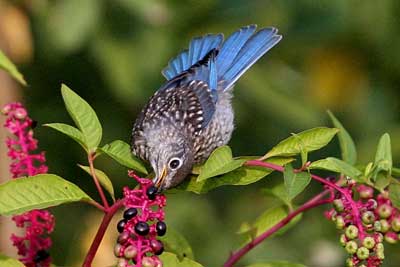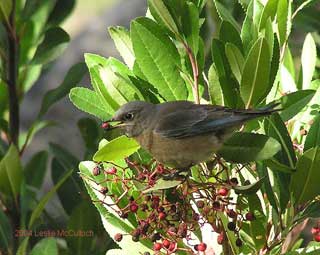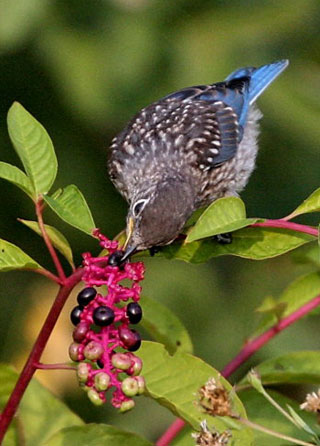Here’s a full list what to plant for our charming Eastern Bluebirds as provided by Sialis.org
It is noteworth to mention that multiflora rose, is a highly invasive plant and should not ever be planted.
Autumn Olive - see Elaeagnus
• Barberry, especially Japanese (Berberis thunbergii), also European (Berberis vulgaris)
• Bradford/Callery Pear - Pyrus calleryana - recent cultivars bred to reduce splitting are not sterile and are invading distrubed areas in the eastern U.S.
• Cherry Silverberry - - see Elaeagnus
• Chinaberry/Umbrella Tree/Persian Lilac (Melia azedarach L.)
• Chinese Tallow Tree (Sapium sebiferum or Triadica sebifera)
• Common Privet (Ligustrum vulgare) and Japanese (L. japonicum)
• Cotoneasters - some like Franchet (Cotoneaster franchetti) and silverleaf (Cotoneaster pannosa)
• Dwarf Mistletoe (Arceuthobium spp.)
• Elaeagnus: Russian Olive (Elaeagnus angustifolia), Autumn Olive (E. umbellata), Cherry Silverberry (E. multiflora), Thorny Elaeagnus (E. pungens)
• English or Cherry Laurel (Prunus laurocerasus)
• English Ivy (Hedera helix)
• Honeysuckles (11 species listed in some states) especially Japanese Honeysuckle (Lonicera japonica), also Tatarian Honeysuckle (Lonicera tatarica)
• Leatherlef Mahonia (Mahoni bealei)
Morrow Honeysuckle (Lonicera morrowii) and their hybrids
• Multiflora Rose (Rosa multiflora Thunbergi)
• Porcelain Berry (Ampelopsis brevipedunculata (Maxim)
• Russian Olive - see Elaeagnus
• Oriental/Asiatic Bittersweet (Celastrus orbiculatus Thunb.) - bright orange berries along the length of stems - American Bittersweet is not invasive
• Thorny Elaegnus see Elaeagnus
• White (wild) mulberry (Morus alba) - white berries


Above: Western bluebirds eating Tonyon berries. Photo by Leslie McCulloch of California.
Below: Eastern bluebird fledgling eating Pokeweed. photo by Dave Kinneer of Virginia.


 Author
Topic: THE BLUEBIRDS OF CANE RIDGE, TENNESSEE : A wildlife journal 2021 to 2026 (Read 166491 times)
Author
Topic: THE BLUEBIRDS OF CANE RIDGE, TENNESSEE : A wildlife journal 2021 to 2026 (Read 166491 times)
